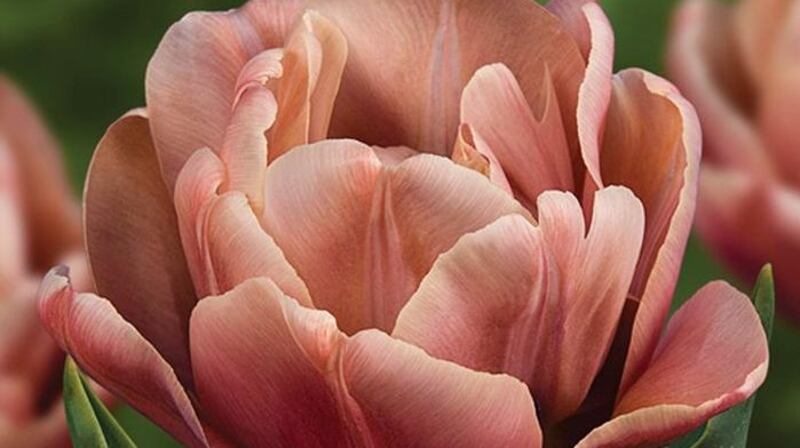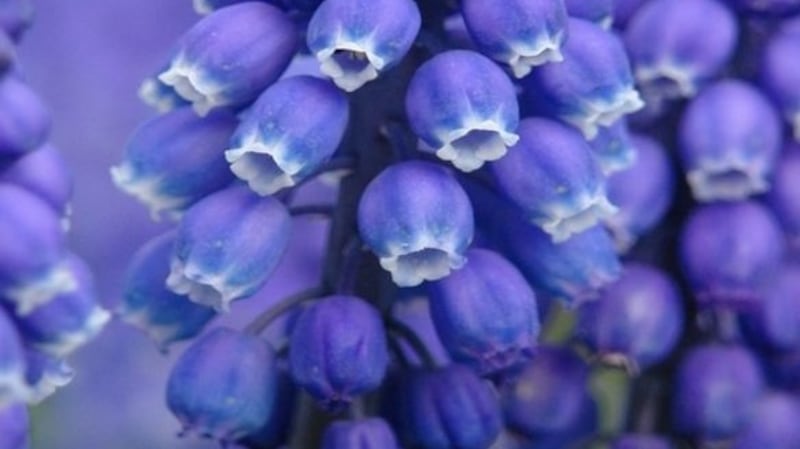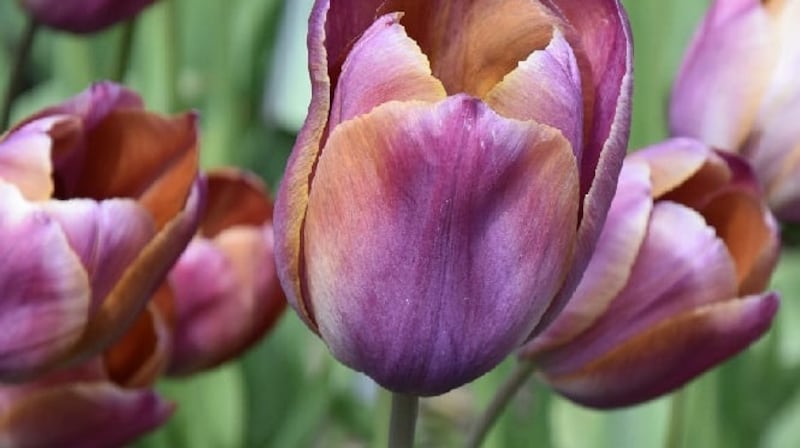When I recently mentioned to a non-gardening friend that I needed to order my spring-flowering bulbs before all the “must-have” varieties sold out, she almost choked on her coffee before snorting with laughter at the very idea that there was such a thing. But, of course, there are; certain fashionable colour combinations (shades of apricot, salmon and peach, for example) have a huge impact on the availability of popular varieties, while enduring classics almost always sell out very quickly at this time of year as the annual rush to get spring-flowering bulbs in the ground begins. With that in mind, here’s a little shortlist of just some of this year’s “must-haves”, along with a guide to reliable suppliers.
Allium ‘His Excellency’
A giant ornamental allium with ultra-long-lasting, pollinator-friendly, violet-pink, deer and rabbit-resistant drumstick flowers (May-July) that reach a height of up to 100cm, are brilliantly decorative in a border and are also suitable for drying . . . what's not to love? The only downside is the price per bulb (but even this can be justified by the fact that this hardy variety of ornamental allium is reliably perennial as long as you plant its large, fleshy bulbs deeply (12-15cm) into a fertile, free-draining soil in a sunny spot in the garden. Height 120cm. Equally statuesque and long-lasting is Allium 'Ambassador', height 150cm. (mrmiddleton.com)
Tulip – ‘La Belle Epoque’

A variety that has reached cult status, this exquisite April-May flowering tulip has large smoky-apricot/rose double flowers that combine well with practically everything. Adored by florists as well as gardeners, it's always one of the very first varieties of tulip to sell out as well as one of the most expensive. So beware any suppliers offering it cheaply in bulk quantities, as almost inevitably you'll discover come springtime that you've been sold a pup. Worthy substitutes include the single, lily-flowered 'Sanne' (rose-pink fading to soft apricot), the single early 'Salmon Prince' and 'Charming Lady (double late variety with apricot-orange flowers). To avoid the risk of soil-borne diseases, wait until late October/ November to plant the bulbs at least 12cm deep and 12cm apart (dejager.co.uk)
Narcissus – ‘Thalia’

Another historic, ultra-hardy garden variety that has earned classic status, this sweetly-scented narcissus bears its graceful pure-white flowers in elegant clusters atop slender stems in March-April. Unusually, it combines well with later-flowering tulips and also looks beautiful planted by itself in generous swathes. Happy in full sun or light shade and in a cool, moisture-retentive but well-drained soil (especially an acid one), Narcissus 'Thalia' is known for its vigour and longevity. Plant the bulbs 12-15cm deep and 7cm-10cm apart. Height 15cm (available as organic bulbs from peternyssen.com)
Grape hyacinth (muscari armeniacum) – ‘Alida’

A newly-introduced variety of grape hyacinth with unusually large, scented, intense-blue flowers lightly edged with white that are good for cutting. While it looks wonderful planted generously in a window box, trough or pot, it's also another great choice for naturalising in the garden and is happy in sun or light shade and in an averagely fertile, well-drained soil. This variety reaches a height of 20cm and blooms in March. Plant its small fleshy bulbs to a depth of 8cm.(peternyssen.com).
Known as historical and/or 'breeder' tulips, these old but very painterly varieties from Hortus Bulborum (the Dutch foundation that works to preserve historic bulb cultivars) are increasingly prized by gardeners for the subtle yet beautiful colouring and markings of their graceful flowers as well as their rarity. Expect to pay a premium; a single bulb of the claret-and-gold 'Absalon', one of the original Rembrand-type tulips that dates from the 18-century, will set you back £5 (jacqueamandintl.com). Not quite tulip-fever but still a little decadent.
Iris reticulata ‘Alida’

Prized for its silver-blue, scented flowers with the daintiest of white and yellow markings, this exquisite new variety of dwarf iris reaches a height of just 10cm and produces its scented flowers in February/March. As is true of all reticulate irises, this spring-flowering, hardy bulbous perennial needs a free-draining, not overly fertile soil and a sunny spot where its diminutive beauty can be properly admired, making it a great choice for a window box, pot, raised bed or rockery. Adding some horticultural grit to the compost/ soil is highly recommended. (peternyssen.com)
Anemone ‘Lychette’

This late-spring/early-summer flowering, newly-introduced variety has larger white flowers and much larger, more prominent yellow anthers than other varieties of the woodland anemone (Anemone nemerosa) and packs a powerful punch in the garden despite its dainty stature (height and spread of 15cm x 30cm). Technically not a bulbous plant as it's grown from rhizomes (modified horizontal stems) rather than bulbs, it's still traditionally referred to as such. Plant its fragile rhizomes 5-8cm deep in a cool, shady spot enriched with leaf-mould beneath the shelter of deciduous trees and shrubs. Left undisturbed, this very pretty wood anemone will gradually naturalise (avonbulbs.co.uk).
Narcissus papyraceus ‘Ziva’
One of the non-hardy varieties of narcissus known as paperwhites that are traditionally forced into fast, early growth indoors/ under cover for flowers as early as Christmas, 'Ziva' brings the garden indoors at that dark, cold time of year when we badly need some natural beauty in our lives. Its ghostly white flowers also pack a powerful punch in terms of scent; just a few bulbs planted into a bowl or shallow pot can easily fill a room with their perfume (avonbulbs.co.uk) .
Camassia leichtlinii ‘Avon’s Stellar Hybrids’
From specialist UK suppliers Avon Bulbs comes this very pretty selection with starry, pollinator-friendly flower spikes "in shades of purple, blue, mauve, greyish, purplish, green, cream and pale pink". Planted in generous drifts into moisture-retentive but free-draining soil in a semi-wild meadow setting, this May-flowering hardy bulbous perennial will happily naturalise over time. Plant to a depth of 10-15cm and 22cm apart. Height 90cm. (avonbulbs.co.uk)
* Recommended suppliers of spring-flowering bulbs include all good Irish garden centres, mrmiddleton.com (known for its extensive collection of spring-flowering bulbs, Mr Middleton's annual Flower Bulb Open Day takes place today (9am-5pm) at its warehouse at 144D Slaney Close, Dublin Industrial Estate, Glasnevin, Dublin 11); Cork-based fruithillfarm.com (limited selection of organic bulbs), bulbs.ie (wholesale basis to landscapers, community groups and public bodies) and all specialist suppliers listed above.

This Week in the Garden…
Cooler temperatures and falling light levels mean it’s time to start closing doors and vents of glasshouses and polytunnels in the evening before re-opening them again each morning. But with reduced ventilation comes the increased risk of plant diseases so keep a watchful eye out for early signs and gently remove, bag and burn any infected plant material promptly. While reducing watering of polytunnel/ glasshouse crops is generally a good idea at this time of year to encourage plants such as tomatoes to ripen well and reduce disease risk, avoid letting the soil dry out too much as this can also cause problems. Always water in the morning and avoid wetting foliage if possible.
This is a good time of the year to start planting out spring-sown biennials such as wallflowers, foxgloves, honesty and sweet William so that the plants have plenty of time to establish good, strong, healthy root systems before the onset of winter. Plant into weed-free, well-prepared soil enriched with a few handfuls of well-rotted garden compost or farmyard manure and water the planting hole generously before and after planting to help prevent transplant shock.
Visit this….
Taking place next weekend in the Phoenix Park Visitor Centre in Dublin, the OPW Biodiversity Festival & Honey Show will include a wide range of talks, walks, lectures, documentaries and workshops on a diverse range of subjects, from bee-friendly gardening to foraging for wild food. Exhibitors at the free event include the Federation of Irish Beekeepers Associations, Birdwatch Ireland, the Irish Wildlife Trust, Tree Council of Ireland, Irish Seed Savers and the National Biodiversity Centre. On Saturday, September 14th, the event's emphasis will be on biodiversity while on Sunday, 15th, it will focus on the craft of beekeeping with the staging of competitive exhibits taking place from 8am-10am, judging at 10.15am and prize-giving at 4pm. For more details see phoenixpark.ie/event/the-phoenix-park-honey-show-2019/
Read this . . .
Beth Chatto: A Life in Plants, by Catherine Horwood (Pimpernel Press, hardback, €30) Authorised by Chatto some years before her death in 2018 aged 94, this fascinating, beautifully-written biography paints a fond and intimate portrait of one of the true greats of the gardening world, from her early childhood in rural Essex to her groundbreaking work as a nursery owner, award-winning author and revolutionary exhibitor at the RHS Chelsea Flower Show, see pimpernelpress.com
Dates For Your Diary
Saturday September 7th (3pm-6pm) and Sunday 8th September (12pm-5pm), Clann Mhuire CLG, Naul, Co Dublin, Naul Gardening & Flower Club 31st Annual Horticultural Show. For further details call 086-285 0561.
Sunday September 8th (3pm), Phoenix Park Visitor Centre, Dublin 8, 'An Illustrated History of the Phoenix Park: Landscape and Management', a talk by Margaret Gormley, chief park superintendent, OPW.
Saturday, September 14th, Kilbride Manor, Manor Kilbride, Co Wicklow, 'How to do the Flowers', a one-day workshop with Irish Times gardening writer, flower farmer and author Fionnuala Fallon on sustainable, foam-free ways to create bouquets, arrangements and floral installations using seasonal Irish flowers and foliage, €150 includes two-course lunch/refreshments, email theirishflowerfarmer@gmail.com or call 086 -8172443 for details.
Saturday September 14th-Tuesday September 17th, Mount Venus Nursery, Walled garden, Tibradden House, Mutton Lane, Dublin 16, 'Mount Venus Nursery Autumn Plant Sale' with 20 per cent off all plants and other special offers, see mountvenusnursery.com.
Sunday September 15th (11am-4pm), Fota Autumn Plant Fair, Fota House and Gardens, Cork, incorporating the Irish Specialist Nursery Association's final plant fair of 2019 with a wide range of plants, bulbs and garden accessories for sale, see irishspecialistnurseriesassociation.com.
Sunday September 15th (10am-5pm), Fruitlawn Gardens, Abbeyleix, Co Laois, Open Day & Rare Plant Sale, admission €5/ children under 12 free, refreshments available, see arthurshackleton.com.



















